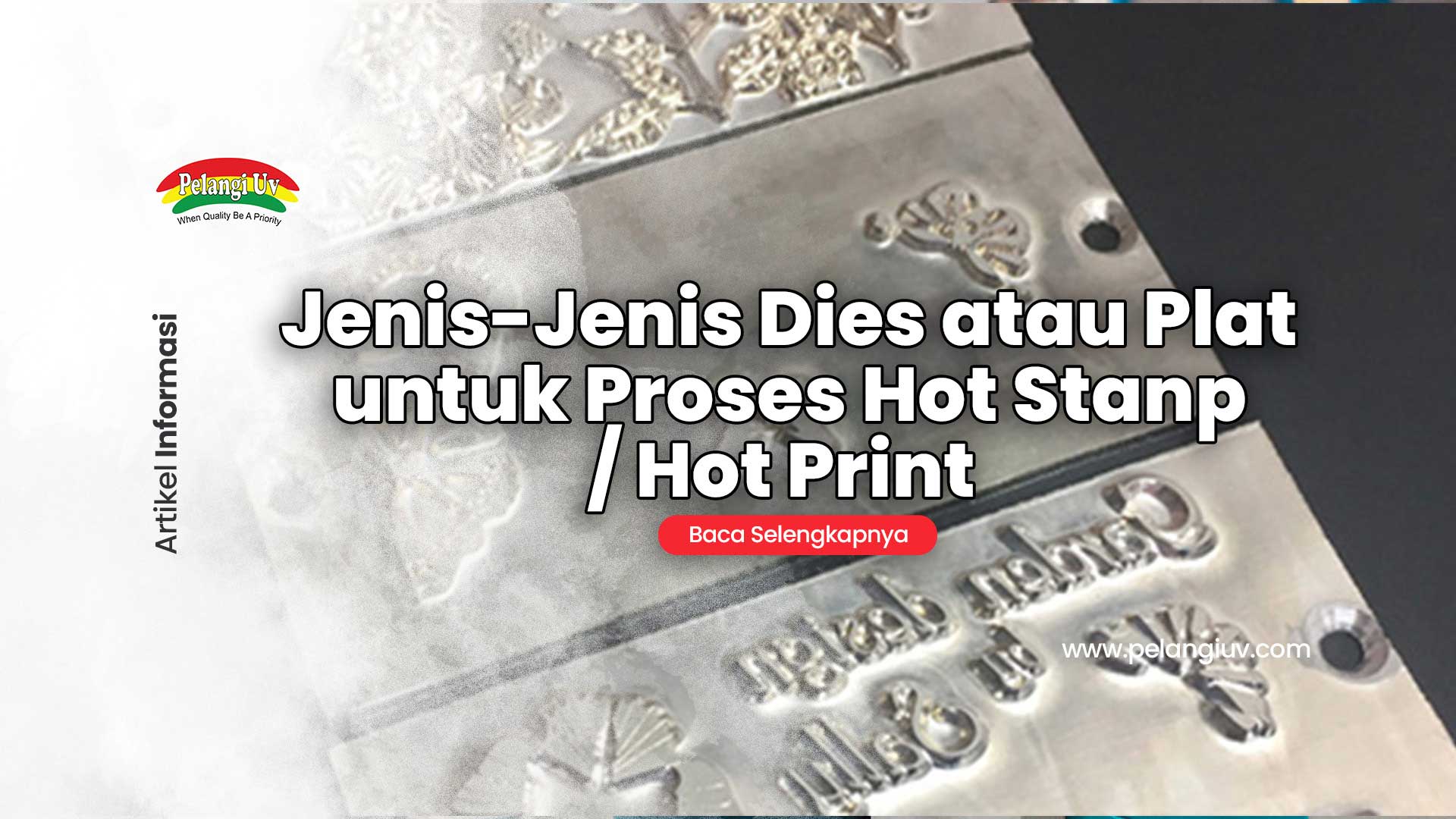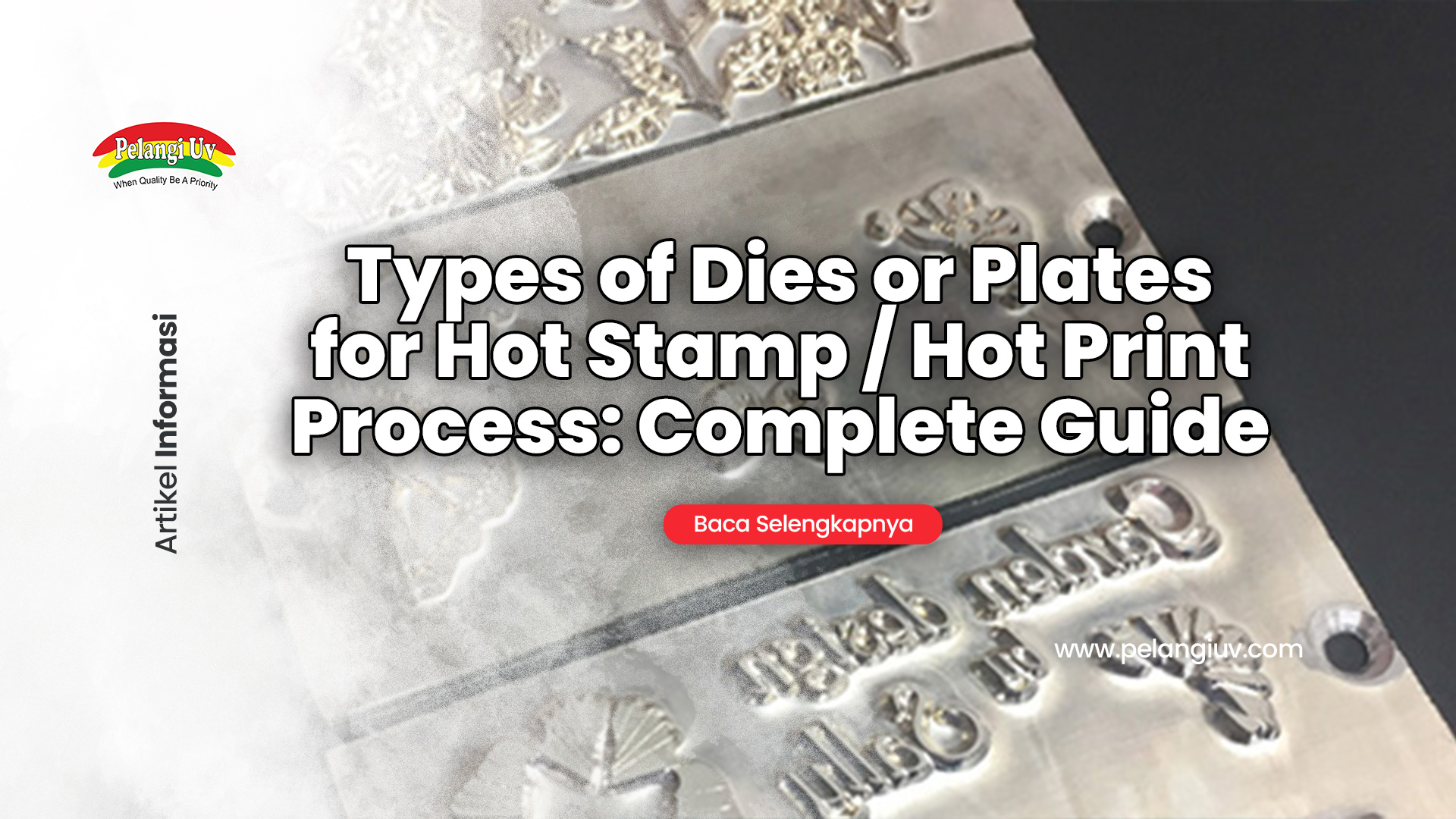Types of Dies or Plates for Hot Stamp / Hot Print Process: Complete Guide
Hot Stamping or commonly referred to as Hot Print is one of the most popular printing finishing techniques in the type of printing finishing to provide a premium visual printing effect. Usually Hot Print is applied to business cards, invitations, to product labels.
In the process, one of the main components is choosing the right type of Dies to determine the optimal Hot Print results.
Choosing the right Dies can determine the results of Hot Print, which can be seen from the quality, durability, to production efficiency.
Dies in the Hot Print Process
It is common knowledge that Hot Print is one of the printing finishing processes that is often used by various types of printing. So that Finishing friends can learn the right type of Dies to produce very fast final results.
Hot Print is a printing method that uses colorful foils which are then transferred to the desired media using very high temperatures depending on the type of foil and the machine used.
One of the main materials of Hot Print is Dies which are commonly referred to as Plates. Dies or Plates are molds made from certain materials which are then pressed to press the foil so that it sticks to the printing material used.
Dies or Plate Materials That Are Often Used
Here are some types of Dies or Plates that are commonly used in the hot print process:
1. Magnesium Dies (Magnesium Plate)
Magnesium material is one of the best types of Plate materials that Finishing friends can choose and almost all printing techniques use Magnesium material, including Hot Print, Emboss, Deboss, even Relief printing.
Magnesium material offers a medium that can transfer heat very well, by highlighting affordable designs and materials, making it easy for businesses to get their capital back.
Finishing friends, if you need a Plate for Hot Print made of Magnesium, Finishing friends can consult and order via WhatsApp Admin Pelangi UV 085174176782.
The advantages and uses of Magnesium itself are as follows:
Advantages: This type of plate is lighter so it is easier to operate.
Use: Usually used for simple designs and does not require too much detail. This plate is also suitable for projects with a limited budget.
2. Brass Dies (Brass Plate)
Brass Plate or Brass Dies material is also widely used for Hot Print. This material is very popular for its durability and ability to produce precise details.
Advantages: Brass plates are very durable and capable of printing in very high volumes. In addition, brass plates are also capable of printing very complex designs that are very detailed such as prints with small writing and more complex motifs.
Use: Brass Plate material is very ideal and challenging such as Hologram foil, metallic, or Emboss.
3. Copper Dies (Copper Plate)
The type of Copper Dies material has actually begun to be no longer used after the emergence of Dies making with Magnesium and other metals. However, there are still some things that require Copper for additional tools.
Copper dies or copper plates have almost the same characteristics as brass plates in terms of durability and print quality. However, copper has better heat conductivity, so the heating and foil transfer process is more efficient.
Advantages: High heat conductivity allows for a faster printing process. Copper plates are also durable and capable of producing prints with good detail.
Usage: Very compatible with designs that require high precision and complex printing effects.
4. Steel Dies (Steel Plate)
Steel plate material is usually used for Hot Print with high pressure, especially on thicker materials such as leather or plastic.
Advantages: Very durable and strong. Steel plates are able to withstand high pressure in the embossing or debossing process, resulting in deep and durable prints.
Usage: Usually used for projects with large-scale printing needs or hard materials such as leather and thick plastic.
5. Silicon Dies (Silicon Plate)
Silicone type plates have the advantage of being more flexible and easy to shape. As Dies, which are made of soft heat conductive materials, the finished Dies can be shaped according to your wishes such as curved surfaces, even irregular ones.
Advantages: Flexible silicone plates with uneven material surfaces. In addition, silicone is not easily sticky, thus minimizing the risk of damage to the printed material.
Usage: Suitable for printing on fabric, flexible plastic, or textured materials.
6. Polymer Dies (Polymer Plates)
This Polymer material is made of Steel that has gone through a special process with the aim of being able to transfer foil to the desired media. Because, Polymer Dies are very limited, but for work on flat surface media will provide advantages compared to Silicon Dies.
Because, this Dies is specifically intended for Photopolymer (a material made of plastic that is frozen in sheet form so that it will harden and can change when exposed to UV light. The technique used is usually called Flexography which is used to print colors on a printing machine.
Tips for Choosing Dies for Hot Print
So, which Dies are suitable for your finishing needs? Yup, if you want to make a plate for Hot Print, you can pay attention to the following:
Material Type: Make sure the dies chosen match the type of material to be printed, be it paper, leather, plastic, or fabric.
Design and Detail: Complex designs require high-quality dies such as brass or copper for precise results.
Production Volume: If production is only for the short term or small volume, magnesium can be a cost-effective choice. However, for large and continuous production, brass or copper are more recommended.
Finishing friends don't need to bother making Dies or Plates for Hot Print anymore because Pelangi UV already provides services for making Plates.
For consultations regarding plate making, Finishing friends can directly contact Whatsapp 082231019363 or 085174176782.
Conclusion
Choosing the right type of dies in the hot print process greatly affects the print results and production efficiency. Starting from brass, magnesium, copper, to steel, each type of dies has its own advantages and disadvantages. Make sure you understand the needs of your finishing project so you can choose the most appropriate dies to get optimal print results.

